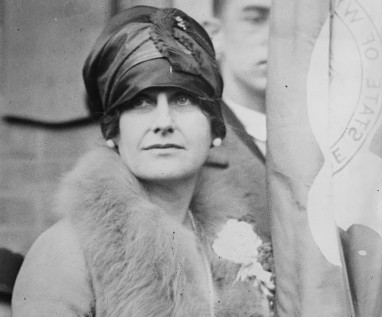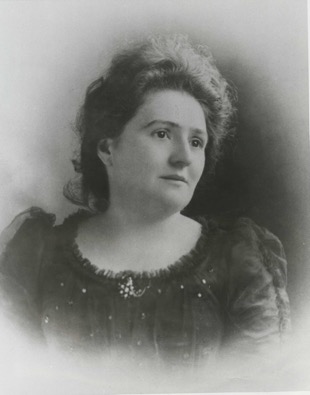Journalism and Jim Crow: White Supremacy and the Black Struggle for a New America (University of Illinois Press, 2021)
Sid Bedingfield, Associate Professor, Hubbard School of Journalism, University of Minnesota
Kathy Roberts Forde, Professor, Journalism Department, University of Massachusetts, Amherst
Describe the focus of your book.
KF: Journalism and Jim Crow is the first extended work to document the role of the white press in building white supremacist political economies and social orders in the New South—and the critical role of the Black press in fiercely resisting—from the end of Reconstruction through the first decades of the twentieth century. The tragic outcomes of this history are still with us and demand our attention.
SB: The book takes a fresh look at the rise of Jim Crow in the South by focusing on newspapers as institutions of power within their communities. The publishers and editors who ran these newspapers used the soft power of public discourse to undermine the Reconstruction project and spread the ideology of white supremacy in post-Civil War South. But they exerted hard power, too. They were political actors who worked closely with other institutions of power – the Democratic Party, obviously – but also with the railroads, mining companies, and other industries eager to take advantage of cheap labor in the emerging New South.
KF: These editors and publishers planned political campaigns to wrest power from Black Republicans, white populists, and bi-racial coalitions. They spread anti-Black, anti-democratic disinformation and propaganda. And they even used the tools of racial terror—racial massacres, lynching, convict leasing—to build a near total world of white supremacy where Black Southerners were not able to vote, serve on juries, hold public office, receive equitable public education, and pursue economic opportunity without white sufferance.
SB: The Black press fought back — even in the South, where Black journalists worked under the constant threat of violence. But by the 1870s, white public opinion in the North, led by the elite white press, had turned against the Reconstruction project. And Black voices that challenged Jim Crow and struggled to build a pluralist democracy were overwhelmed by the popularity of the white supremacy ideology nationwide.
How did you come across this subject? Why did it interest you?
KF: I did an independent study with an undergraduate student on the connections between the convict leasing system and the white press in the South, research that eventually led to the book chapter on Henry Flagler’s use of newspapers to control public information about his labor practices used to turn Florida into a tourist empire. Sid and I always share our research, and we began to piece together instance after instance of white newspaper leaders using their power to create anti-Black, anti-democratic systems and policies, often using violence.
SB: My first book, Newspaper Wars, argued that Black and White newspapers had exerted more political influence in the struggle over civil rights in the mid-twentieth century that had been previously acknowledged. I had seen how the white, daily press had collaborated with politicians and business leaders in to resist Black equality. Kathy’s research on Flagler and his effort to control the press in Florida resonated with me immediately. At the same time, I was pleased to see the historians Julian Zelizer and Bruce Shulman, in their 2018 book, call for scholars to take mass media outlets more seriously as historical actors capable of shaping political outcomes. The influence of Fox News and its inextricable link to right-wing politics was clearly opening eyes about the substantive role mass media has played in American politics.
KF: We thought about writing the book ourselves, but there was just too much territory to cover and the subject felt urgent and timely. So we asked other historians to join us, and we all worked very closely together to develop the book’s themes and arguments.
SB: Recruiting the contributors was one of the most satisfying aspects of the project. For example, I had always respected the book Right to Ride, Blair Kelley’s study of Black resistance to Jim Crow, but I had not met her. I reached out, and she grasped our concept immediately. As it turns out, we share a mentor, historian Patricia Sullivan. Her research on Black journalist J. Max Barber and the Atlanta riots of 1906 provides a poignant closing chapter in our book.
KF: We held a book symposium at the Hubbard School at UMN, where Sid is on the faculty, and Blair suggested the book needed a chapter devoted to the Black press and its calling out of Grady and the white press in the New South project. Our group immediately thought of D’Weston Haywood, whom I had met a few years earlier at the Schomburg Center when he was finalizing research for his book Let Us Make Men: The Twentieth-Century Black Press and a Manly Vision for Racial Advancement. He loved the project and joined us.
What archives or research materials did you use?
SB: I returned to some old haunts in South Carolina — the Ben Tillman Papers at Clemson University, the South Caroliniana Library at the University of South Carolina, and the South Carolina Historical Society archives in Charleston. I also made my first trip to the Alabama Department of Archives and History, the nation’s first publicly funded independent state archives agency (as they are quick to point out). I snuck in just before the pandemic hit and spent time in the papers of former Montgomery Advertiser editor William Wallace Screws and several other political figures from the period. Unfortunately, one of our greatest gaps in historical evidence concerns the populist press in the South. This project has driven home to me the importance of the white and Black populist movements in the in the1880s and 90s.There were hundreds of colorful populist newspapers in Alabama and across the South at the time, but the overwhelming majority left no archival trace at all. It is a tragic loss.
KF: I worked in the Henry Flagler Papers at the Flagler Museum in Palm Beach, the Henry W. Grady Papers at Emory’s Rose Library, and the Joseph E. Brown Papers and the Alfred H. Colquitt Papers at UGA’s Hargrett Library. I consulted various books and materials at the Atlanta History Center. Bryan Bowman, who co-authored the Flagler/Florida chapter with me, and I did a very deep dive into the expansive Justice Department Peonage Files. When he was still an ungraduated student, Bryan took an independent trip to Jacksonville to work in the state convict lease records and microfilm of historical Jacksonville newspapers. Of course, I analyzed a massive amount of press material from the period, along with legislative records and U.S. congressional records. I also read across an incredibly broad range of historiography, digging into footnotes for important breadcrumbs to follow.
How does your book relate to journalism history? How is it relevant to the present?
KF: We hope the broad public, teachers, students, and journalists will read Journalism and Jim Crow and learn about the importance of the press in political, social, and economic conflict and change in the past and in our own moment. Much is at stake. Journalists and news leaders today need to understand how white power and white normativity operate in their own newsrooms. We hope journalists across the country will discuss and learn from the ugly historical truth Journalism and Jim Crow lays bare: white journalists and mainstream journalism have too often served anti-Black, anti-democratic political purposes even as they claimed to be impartial, neutral, and objective.
SB: Kathy sums it well. I’ll just add this: I believe Fitz Brundage’s piece on lynching and the white southern press should be required reading in every newsroom and journalism school. His argument that lynching and white southern journalism were constitutive of one another is powerful and nuanced. It should be taught in classrooms nationwide.
What advice do you have for other historians that are working or starting projects?
SB: I’m not sure this applies to every project, but the impact of the symposium we held early in fall 2019 was a revelation to me. Kathy proposed we gather contributors to discuss the book. It would be costly, and I was initially skeptical. But I must say – the all-day symposium at the Hubbard School in Minneapolis moved the project forward in substantive and unexpected ways. The back-and-forth between contributors – and even some non-contributors like Alex Lichtenstein and Douglas Blackmon – enhanced the final product significantly. I have to thank the top brass at the Hubbard School and the Department of Journalism at UMass-Amherst for making it possible.
KF: Work with smart, generous partners—like Sid and everyone else on this project–who challenge you and do careful, rigorous work. And look for meaningful empty spaces in the historical record.






